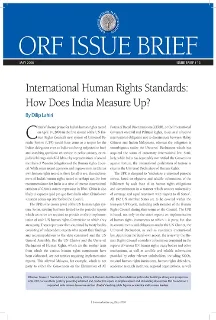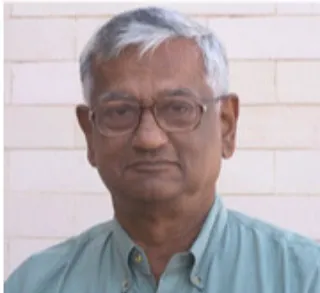China’s fulsome praise for India’s human rights record on April 14, 2008 in the first session of the UN Human Rights Council’s new system of Universal Periodic Review (UPR) would have come as a respite for the Indian delegation even as India was being subjected to hard and searching questions on torture in police custody, extrajudicial killings and child labour by representatives of several members of Western delegations of the Human Rights Council. While some recent openness and improvement in China’s own human rights record is there for all to see, this endorsement of India’s human rights record is perhaps not the best recommendation for India at a time of intense international criticism of China’s current repression in Tibet. China is also likely to expect a quid pro quo from India when China’s own situation comes up later before the Council.
The UPR is the crown jewel of the UN human rights system. So far, scrutiny has been limited to the periodic reports which countries are required to provide on their implementation of each UN human rights Convention to which they are a party. These reports are then examined by treaty bodies consisting of independent experts who report their findings and recommendations to the state concerned and the UN General Assembly. But the UN Charter and the Universal Declaration of Human Rights, which are the mother texts from which the various human rights instruments have been elaborated, are not treaties requiring implementation reports. This allowed Malaysia, for example, which is not party to either the Convention on the Elimination of All Forms of Racial Discrimination (CERD), or the International Covenant on Civil and Political Rights, to act as if it had no international obligation not to discriminate between Malay, Chinese and Indian Malaysians, whereas the obligation is unambiguous under the Universal Declaration which has acquired the status of customary international law. Similarly, while India has regrettably not ratified the Convention against Torture, the international prohibition of torture is clear in the Universal Declaration of Human Rights.
The UPR is designed to “undertake a universal periodic review, based on objective and reliable information, of the fulfi llment by each State of its human rights obligations and commitments in a manner which ensures universality of coverage and equal treatment with respect to all States”. All 192 UN member States are to be covered within the four-year UPR cycle, including each member of the Human Rights Council during their terms on the Council. The UPR is based, not only on the state’s reports on implementation of human rights instruments to which it is party, but also its commitments and obligations under the UN Charter, the Universal Declaration, as well as customary international law. Apart from the State’s own report, the review by the Human Rights Council considers information contained in the reports of various UN human rights treaty bodies and other mechanisms, as well as credible and reliable information provided by other relevant stakeholders, including NGOs, national human rights institutions, human rights defenders, academic research institutes, regional organizations, as well as civil society representatives.
It should have been no surprise, therefore, that India’s non-conformity with international human rights benchmarks received more concentrated exposure during the UPR than they have ever had in the past in the course of the fragmented consideration of its implementation reports under individual Conventions. Pointed questions were raised about India not ratifying the Convention against Torture, not being Party to the Conventions on the Rights of Migrant Workers and their families, on refugees and stateless persons, the ILO Conventions on the abolition of child labour, on the rights of indigenous and tribal people, and the Government’s persistent refusal to cooperate with the Council’s special procedures with respect to torture, the treatment of human rights defenders, contemporary forms of racism and racial discrimination (read Dalits and caste discrimination), extrajudicial, summary and arbitrary executions, sale of children, child prostitution and child pornography, and arbitrary detentions. Most persistent were questions about the lack of implementation of India’s comprehensive constitutional and legal framework for protecting human rights.
All this does not at all mean that India is an international scoff-law on human rights. India‘s record on human rights, warts and all, is certainly no worse than that of the majority of UN members, and would probably still be ranked among the top third. Indeed there is widespread international appreciation and admiration for the sweeping proactive legal and administrative provisions that have been put in place for the promotion and protection of the full range of internationally recognized human rights, whether in terms of outlawing egregious forms of caste discrimination, or affirmative action programmes in favour of historically disadvantaged sections of the population and vulnerable sections such as women, children and the disabled.
But India’s Achilles heel has always been implementation and what has been described as a “culture of impunity” when faced with routine violations of the laws and regulations in terms of atrocities against Dalits, deaths in police custody, encounter killings and disappearances or communal violence, as reported almost every day in India’s own media.
The views expressed above belong to the author(s). ORF research and analyses now available on Telegram! Click here to access our curated content — blogs, longforms and interviews.

 PDF Download
PDF Download



 PREV
PREV


